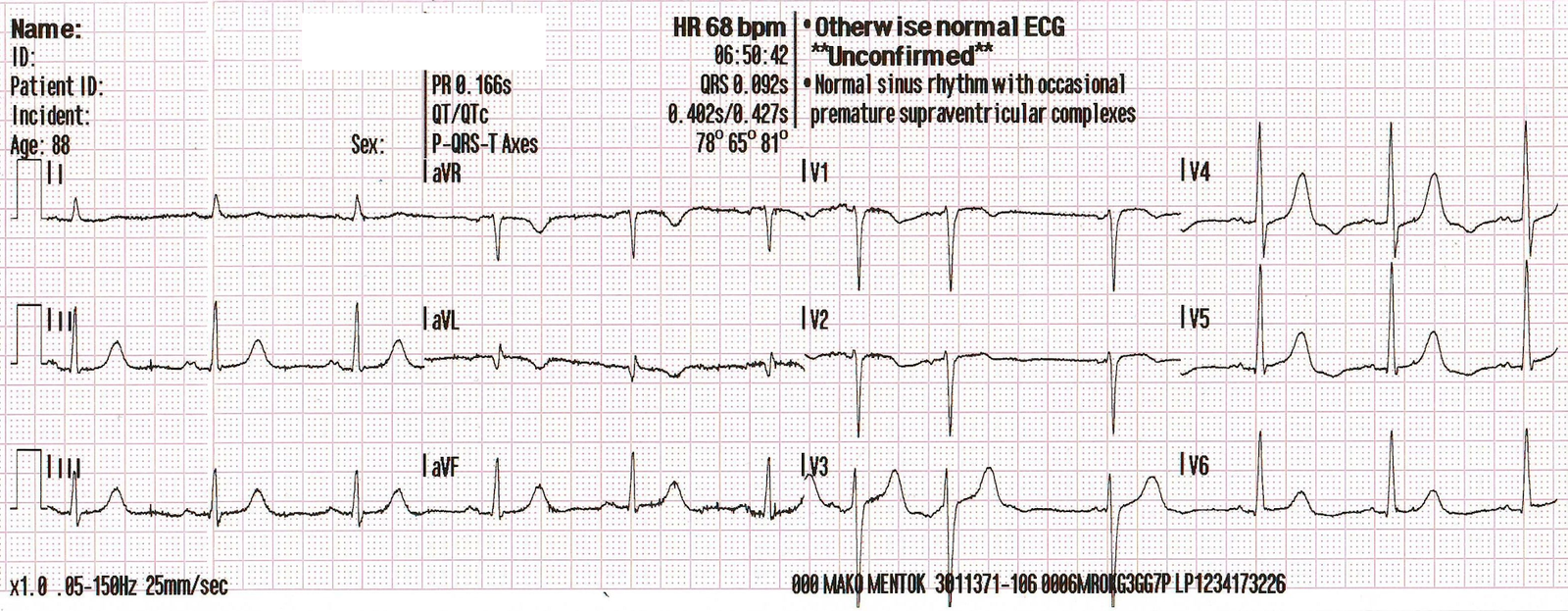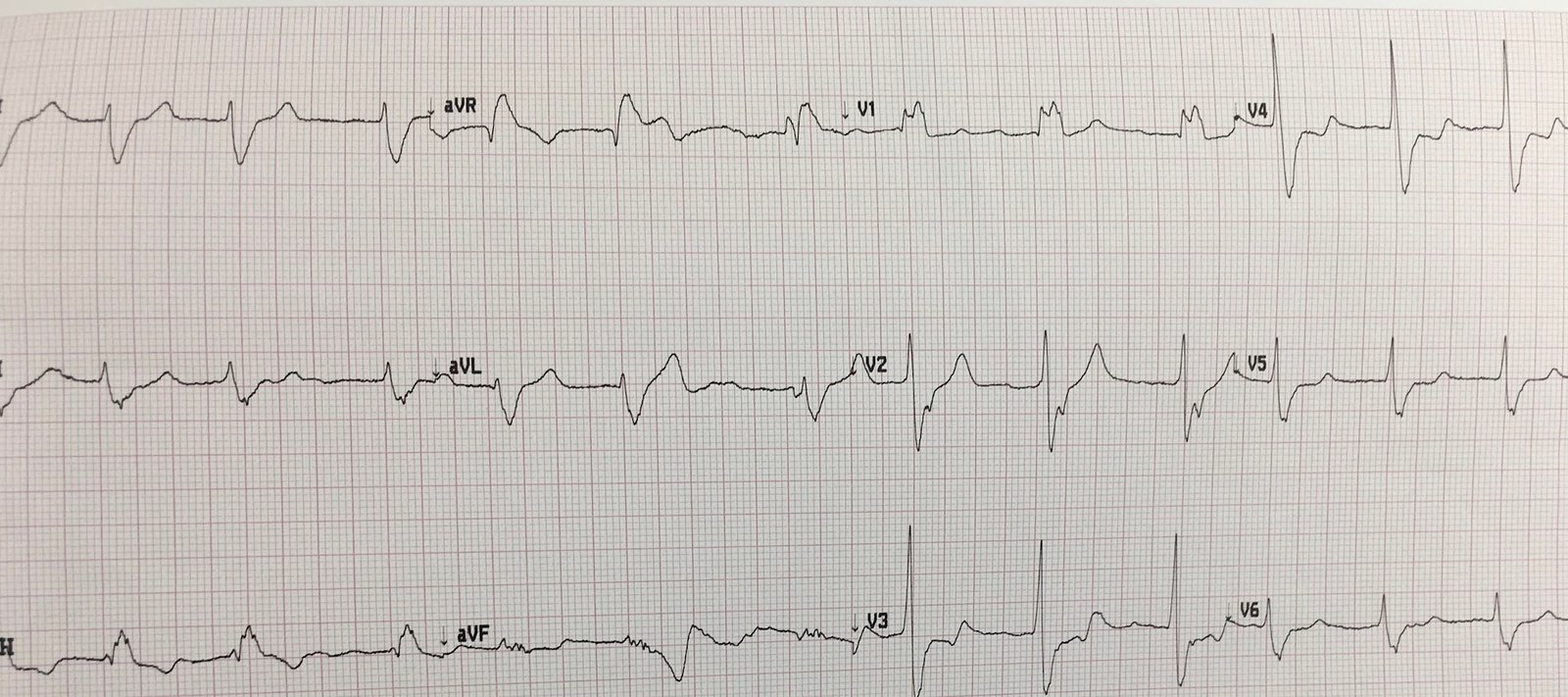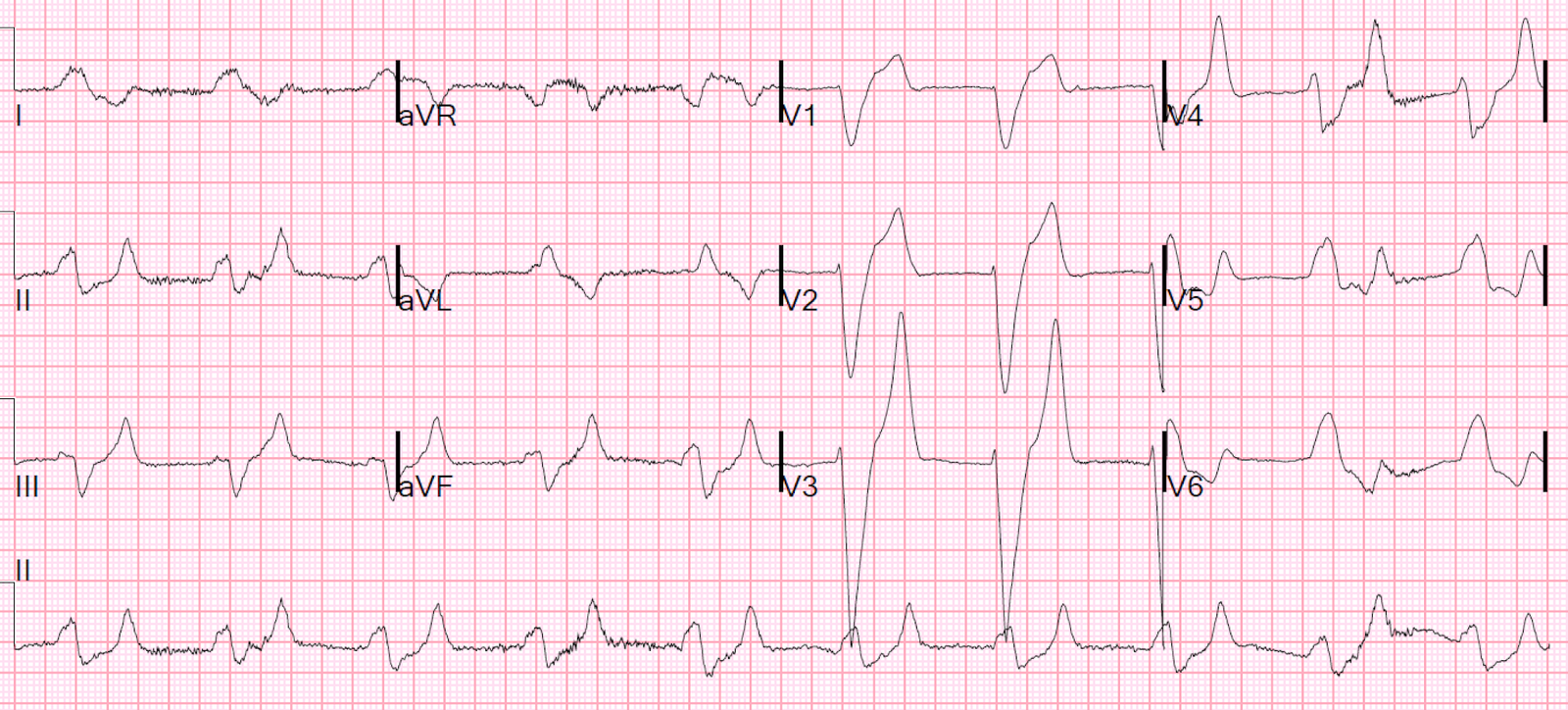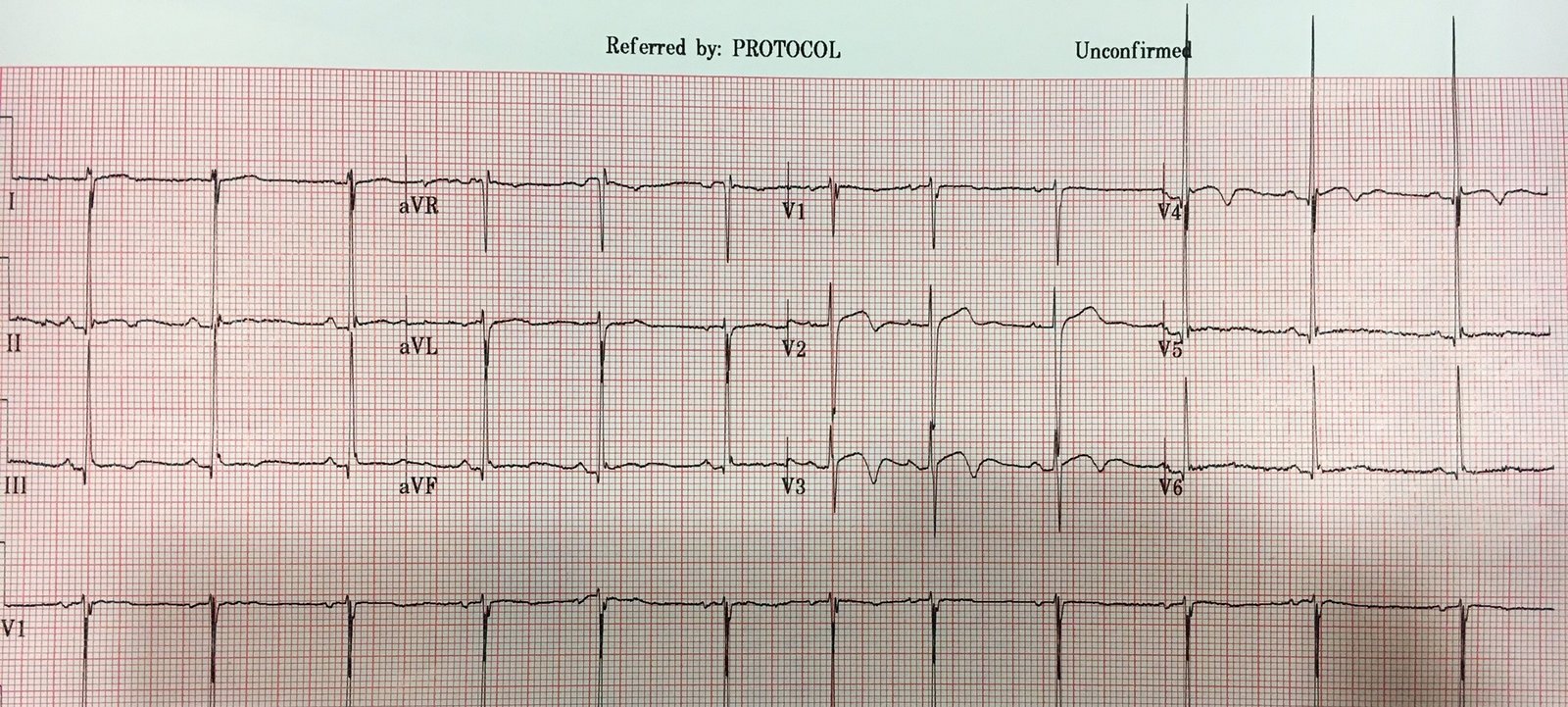This case was sent by Laszlo Farkas, a paramedic from Hungary. He discussed it with Janos Borbas MD and Robert Sepp MD from University of Szeged 2nd
Department of Internal Medicine and Cardiology Clinic.
The case inspired me to resurrect a case that I published 10 years ago with the same ECG finding (2nd case below).
What is the finding?
What does it signify?
Case
An elderly male presented with chest pain. Here is the first ED ECG:
 |
| Hint: the finding is NOT the T-wave inversion in aVL |
This ECG that I published 10 years ago in Critical Decisions in Emergency and Acute Care Electrocardiography has the same finding:
 |
| What is the finding? |
The finding is an inverted U-wave, as demonstrated with arrows here:
 |
| Inverted U-waves in a patient with chest pain are reported to be highly specific, but insensitive, for ischemia/infarction. |
Here is the ECG from Laszlo’s case again:
 |
| See the inverted U-waves in V3, V4, V5 |
In Laszlo’s case, he recognized it and recorded another ECG 35 minutes later:
 |
| Now the U-waves are not the issue. There is obvious STEMI. |
This is after reperfusion and stenting of an occluded LAD:
 |
| Terminal T-wave inversion, consistent with reperfusion. |
And then 13 minutes later:
Here is case 2:
This shows the initial ECG shown again, the comparison ECG from previous, and the reperfusion ECG after stenting of LAD that had severe subtotal thrombotic occlusion with TIMI-2 flow:
This 89 year old had an episode of unresponsiveness.
Previous ECG:
First ECG with arrows (again)
 |
| Slight STD in inferior and lateral leads, some STE in aVL, and profound negative U-waves in V3-V5. |
After Reperfusion of LAD:
 |
| Reperfusion T-waves (Wellens’ waves) |
–>







i've got enough trouble with the original five waves, Steve, without throwing in the enigmatic sixth.
that first ekg by Lazlo Farkas could easily have gotten by me (before tonight). although, aVL did look unhealthy with the inverted T, and very slight hint of ST elevation (?). and even V2 looks "ill" with a low amp QRS, slightly biphasic T, and ? poor R wave progression from V1 to V2 to V3, (or is that my imagination).
what's very frightening is Lazlo's next . i guess there was less need for discussion with the cath team then.
thank you, again
tom
Excellent points by Dr. Smith in this Blog post about recognition and clinical significance of U wave inversion. In my experience, U wave inversion is uncommon (if not rare) — though part of that might reflect how easy it is to overlook this finding! Dr. Smith highlights 2 superb cases of U wave inversion in this post! That said — I believe even without the marked U wave abnormalities seen here — that BOTH cases should be picked up by the presence of other findings. ECG #1 (the case by Laszlo Farkas) — Not only is the T wave abnormally inverted in lead aVL — but there is also a large Q in aVL, and a clearly abnormal coved ST segment in this lead. Some isolated T inversion may at times be normal in aVL — but usually this is when the QRS is predominantly negative in this lead, and in view of the tiny R wave amplitude seen here in aVL — the depth and width of the T inversion seen here is clearly abnormal. Confirmation in a patient with chest discomfort that these findings in aVL are acute is forthcoming from EACH of the 3 inferior leads, all of which show an inappropriately flat ST segment with abrupt angulation rising to a prominent (fatter-than-it-should-be) T wave — which in effect is the mirror-image ( = reciprocal change) of the ST-T wave that we see in lead aVL. This picture in a patient with chest pain to me suggests OMI-in-progress until proven otherwise. As for ECG #2 (Dr. Smith’s wonderful case from 10 years ago) — there is subtle-but-real ST flattening with slight depression in no less than 7 leads with subtle-but-real ST elevation in lead aVR. Assuming serum electrolytes are normal — this ECG picture in an older adult should suggest significant coronary disease until proven otherwise. THANKS again to Dr. Smith for publishing 2 superb examples of clinically important U wave inversion!
Thank you dr.smith for the wonderful cases and the great insight of the importance of U waves in ischemia.
Thanks to dr.grauer for further expert reading of these cases.